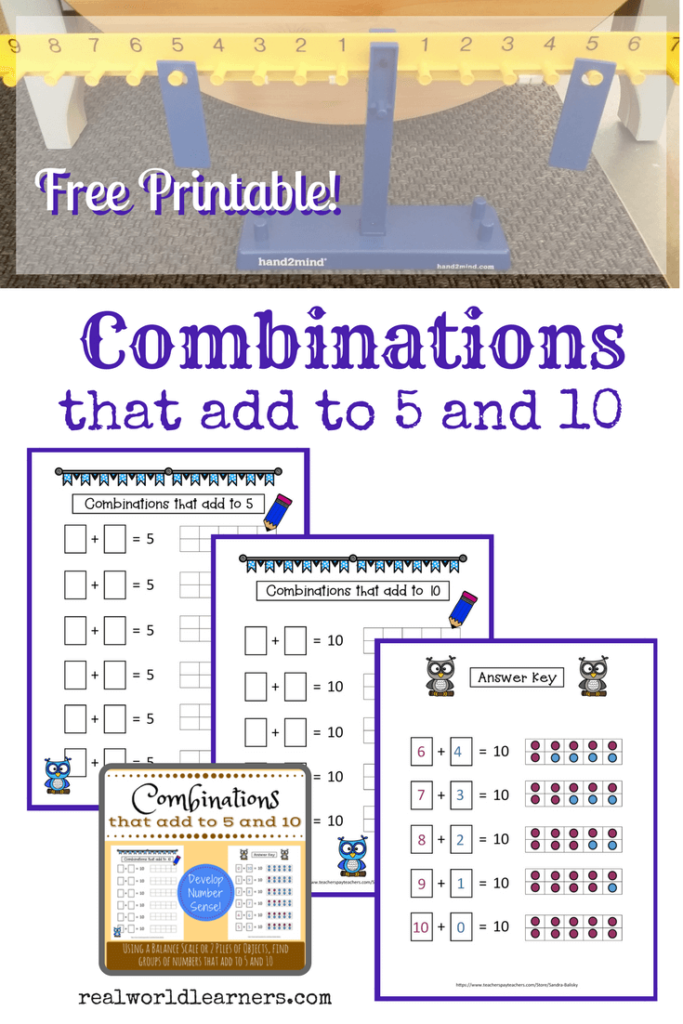 (Note: This post contains affiliate links,meaning that I may get a commission on any purchases made through these links at no additional cost to you. You can read my full disclosure policy here.)
(Note: This post contains affiliate links,meaning that I may get a commission on any purchases made through these links at no additional cost to you. You can read my full disclosure policy here.)
For math, we’ve been working on using ten frames to develop solid mathematical reasoning skills, and beginning to practice addition by working on combinations of 10. (In order to lay a foundation for that, we began with discovering and then memorizing combinations of 5.)
As a tutor, math teacher, and now a homeschooling mom, I’ve found that the best way to teach students math (starting from Kindergarten, if possible!) is to introduce the concept of equations with a balance scale.
Students can see and intuitively understand that in order to make a scale balance, you need to have the same amount on either side. RightStart mathematics provides a very helpful number scale in their set of hands-on learning materials (manipulatives) that accompany their lesson books. I’ve been eager to start using this with my son, so even though we haven’t come to this part in the curriculum yet, I set up a small activity for him.
Discovery-based learning
I’m a complete believer in the value of discovery-based learning. If we can guide students generally in the direction of a big idea and provide the materials for them to succeed while not feeding them answers or leading prompts — or pressuring them to hurry! — they can learn a concept in a deep, rich way through discovering how things work.
I always think of this as learning to navigate a new city by driving around and studying maps until you understand the full lay-out of all the streets, rather than always depending on GPS to give you step-by-step directions. In the first scenario, you develop a lot more confidence in your ability to get around places and have constant flexibility to try different routes, knowing how everything connects together. If you depend on all the “lefts” and “rights” that GPS dictates to you, you’ll be at a pretty big loss if you lose reception for a minute or run out of battery power.
Learning to Mastery
To balance this emphasis on discovery-based learning, I think I should add that I also believe that once students understand how something works, they should practice that skill in a wide variety of scenarios until they’ve learned it to the point of mastery – that is, until they can both apply their understanding in new situations and explain what they know to others.
Once they’ve mastered a concept, I really don’t see the value in repetitive, busy-work worksheets. One of the biggest advantages, in my opinion, to homeschooling, is that you have the opportunity to keep your finger on the pulse of each child’s understanding and adapt the pace as needed to fit the child – instead of trying to “adapt” the child to fit the schedule.
Magic Questions
I often open up new concepts to my kids throughout our very flexible homeschooling days/life with “magic questions” – questions that lead to a big idea but are open-ended enough to provide them a lot of room to explore and fill out their understanding of a concept as they make their way towards the answer to the magic question.
Combinations of 5
I brought out the balance scale with the weights and let Superman (4 y.o.) play around with it for a few minutes. Then I showed him how to make it balance by placing a weight on 5 on each side. It made sense to him that it would balance when the weights were placed on the same numbers.
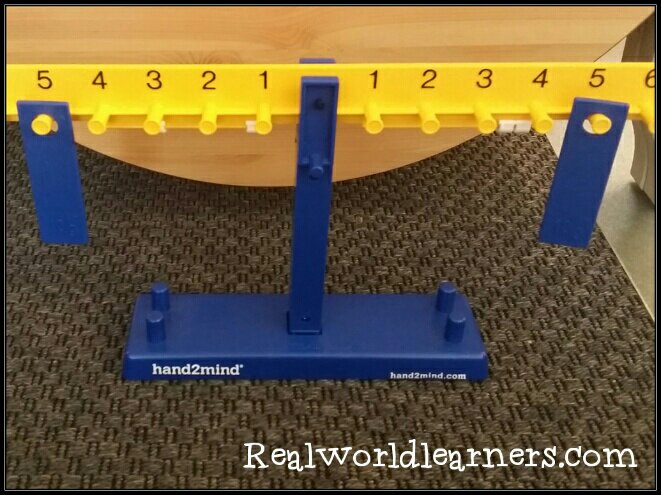
Then I took one of the weights off a 5 and handed him two weights and asked him the big, magic question:
“Where can you place these two weights to make the scale balance?“
He was completely baffled – just like I had hoped :). If a question is too easy to answer, then either students have been exposed to a concept “prematurely” so that they already know the answer without even really understanding the question, or the “magic question” isn’t broad enough to encompass a lot of smaller learning moments.
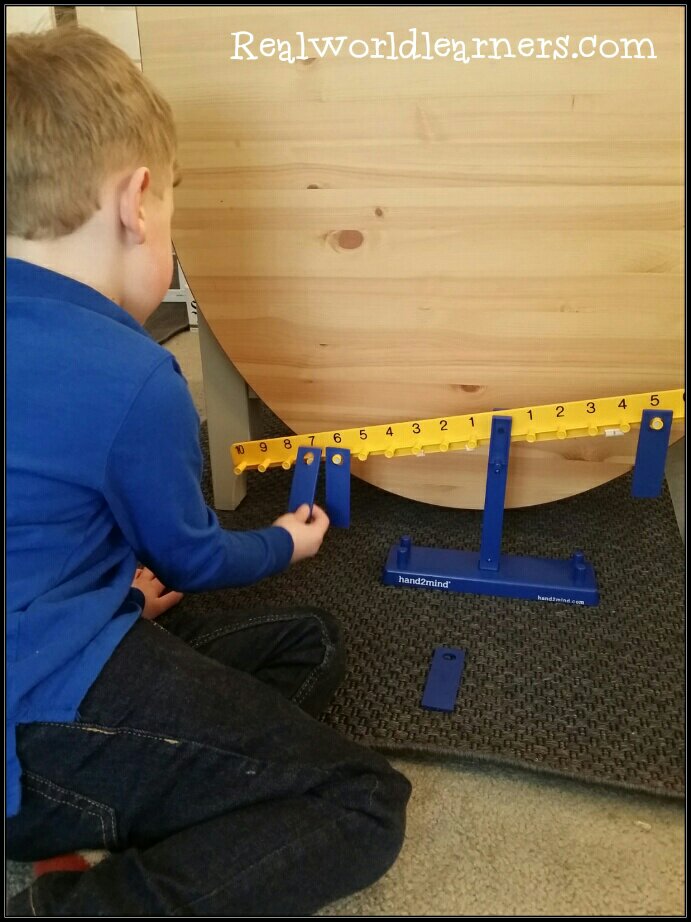
He played around with it for a long time, insisting it was impossible and asking for hints relentlessly, but I refused to tell him anything and just encouraged him to keep trying. I did eventually tell him that not only was it possible, but there were 6 different possible ways to make it work. Then I made up a chart for him to document his findings once he figured out one answer.
Eventually, I did have to give him one hint, but he had given it his best try and I could tell he was getting frustrated, so I didn’t mind helping lead him to the next step in the discovery process. I placed one of the two weights on the number 1 and asked him to try to place his weight on every number until he found which one made the scale balance. (Keep in mind, there was a 5 on the other side.) He tried placing his weight on 2, but the scale still tipped, so he tried 3 and then 4.
The magic moment
He was so impressed (and I was so happy with his delight in his own discovery!) when he realized that the 1 and 4 together made the scale balance! We wrote this down on our record sheet, and then I showed him how to record this with two different colors in a ten frame.
Then I moved the weight that I had placed on 1 to the number 2 and asked him to figure out where to place his piece. He tried 3 and it worked! We recorded this, then talked about the option of placing a weight on 3 first and then on 2. Would that be different? It made the scale balance either way, but it was a little bit different of a situation, so we recorded that as well. I mentioned that this was called the “transitive property” — just for exposure to more math vocabulary ;).
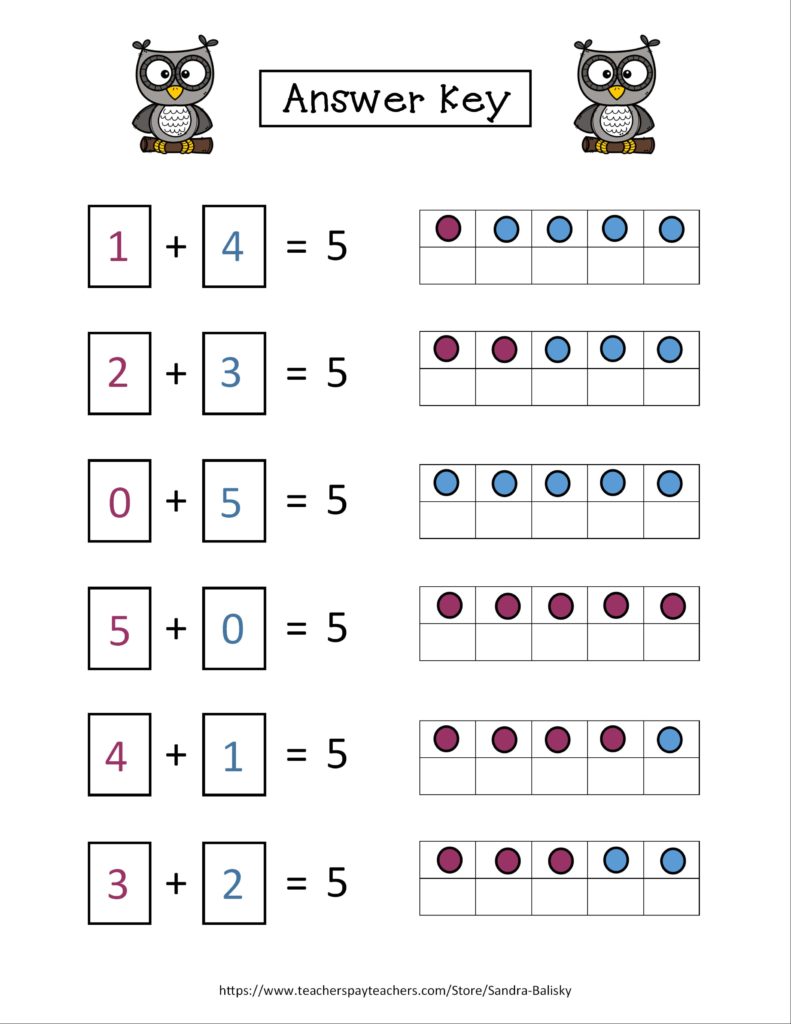
Lastly, I put one weight on 5 and asked him where he could put the second weight. He thought it was a joke, because the scale was already balanced – this led to a great conversation about the “zero property of addition,” which works like it sounds – you can add 0 to any number and still equal that number. It seemed a little silly to him, but he wrote down both version of the equation (5 + 0 = 5 and 0 + 5 = 5) with ten frames for each.
Combinations of 10
Then I made another sheet (2 pages this time) to record all the options for combinations of 10. We didn’t get to it in the same day, but I’ll revisit it with him soon.
If you don’t have a scale to use …
If you don’t have a number scale but you do have access to another type of balance scale with two sides, you could do very similar activities using objects for counting, instead of weights on a number line. I’ve created an activity-based learning pack based around this concept of understanding equations as balanced sides on a scale; you can read a full description and see sample pages by clicking on the image below:
If you don’t have any type of scale to use, you can simply do all these activities that help kids find combinations of 10 and 5 with two piles of objects (use two different colors for objects on the left that add up to 5, and a 3rd color for the set amount of 5 objects on the right), with an equal sign drawn on a piece of paper in between them. Kids can understand that you will need the same amount on either side to make it equal even without the visual representation of the scale; I just think it makes for a deeper understanding if they are actually experimenting with numbers to see what makes it balance – and discovering that it only balances when both sides are equal. This lays such a solid foundation for Algebraic reasoning, and all math beyond that! 🙂
Get your copy here:
If you’d like to try a similar mathematical investigation at home, you can get this for free using the button below. (It includes answer keys and explanations.)
 See this printable with a full preview here.
See this printable with a full preview here.
You can read more about our experience with the RightStart Math curriculum here:
Or check out their sight directly here (by clicking on the image below):
You may also be interested in these products from my TPT store:
(Click on either picture to see a full description with previews.)
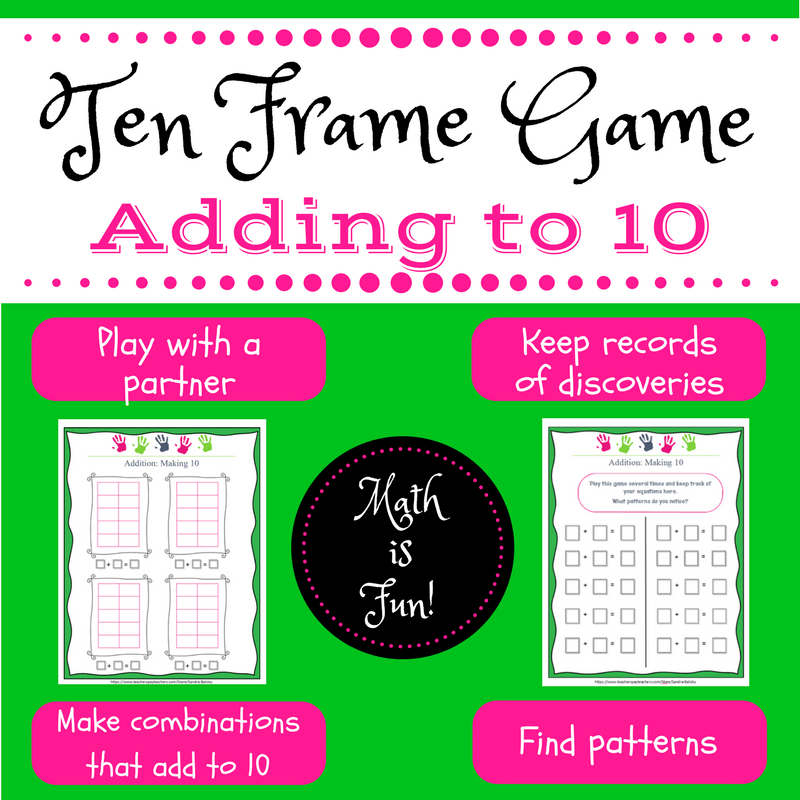

EDIT: This book is the foundation for my Developing Number Sense course. You can read more about it here.

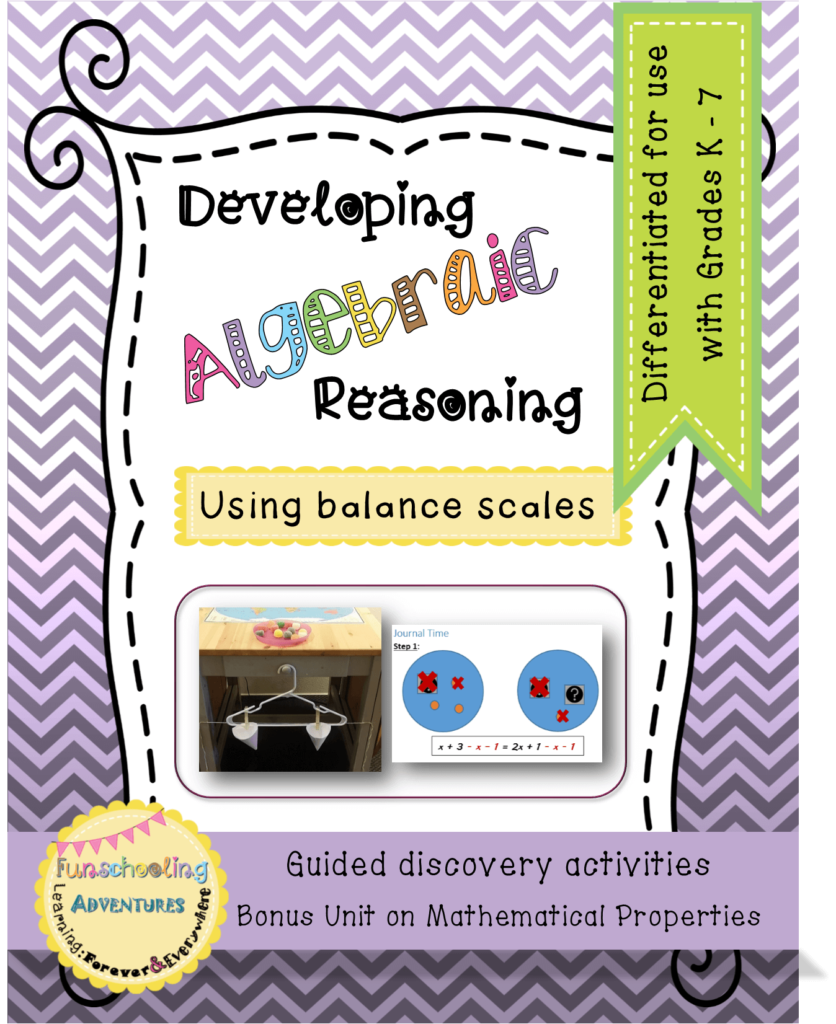

7 comments on “combinations of 10 and combinations of 5 with a free printable”
Comments are closed.